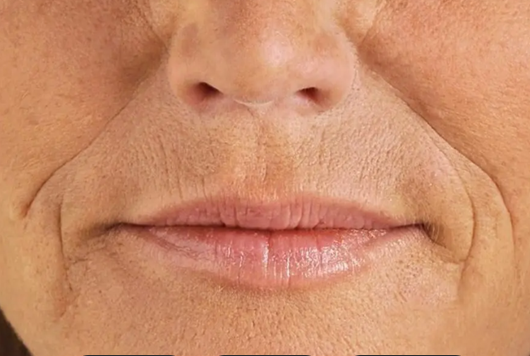
You notice them in the mirror, especially when you smile. Those small, painful splits at the corners of your mouth. They might start as a little redness, then deepen into cracks that sting, bleed, and make everyday things like eating a sandwich or yawning a wincing affair. It’s easy to dismiss them as a sign of cold weather or chapped lips. You might slather on lip balm or Vaseline, hoping to soothe the irritation.
But when these cracks persist, returning again and again despite your best topical efforts, it’s time to look deeper. Much deeper. Your body is using this highly visible location to send a direct message about an internal deficit. Those painful cracks, known medically as angular cheilitis, are a classic and often overlooked sign that your diet is dangerously missing key B vitamins and iron.
Think of your body as a complex, constantly regenerating machine. To rebuild and repair tissue—especially in high-flexure areas like the corners of your mouth—it needs specific raw materials. When those materials are in short supply, the weakest points are the first to break down.
Here’s a closer look at the critical nutrients your body is crying out for.
The Primary Culprit: Riboflavin (Vitamin B2)
Riboflavin is a workhorse vitamin essential for energy production, cell growth, and maintaining healthy skin and mucous membranes. A deficiency directly impacts the skin’s ability to repair itself.
- The Connection: The corners of the mouth are a point of constant mechanical stress. Without sufficient B2, the delicate skin there can’t regenerate properly. It becomes thin, fragile, and prone to tearing. The cracks are a literal breakdown of tissue at a stress point, a direct result of the body’s lack of building blocks for repair.
- The Bigger Picture: A riboflavin deficiency rarely travels alone. It often signals a broader lack of B-vitamins, which work together as a team. This is common in diets low in whole grains, lean proteins, and leafy greens.
The Crucial Partner: Iron
Iron’s role is to help red blood cells carry oxygen throughout the body. When iron is low (a condition known as anemia), tissues are starved of the oxygen they need to heal and stay healthy.
- The Connection: The skin and mucous membranes, including those at the corners of your mouth, become pale, weak, and more susceptible to infection. The cracks of angular cheilitis are not just tears; they are often secondarily infected with yeast or bacteria, which thrive in the compromised, oxygen-deprived tissue. The iron deficiency creates the weak canvas, and common pathogens then paint the painful picture.
- The Bigger Picture: Iron deficiency is one of the most common nutritional deficiencies in the world. The cracks at your mouth could be an early, visible sign of an underlying anemia that is also causing you fatigue, weakness, and shortness of breath.
The Supporting Cast: Other B Vitamins
While B2 and iron are the headliners, other B vitamins play a supporting role.
- Vitamin B3 (Niacin): A severe deficiency causes pellagra, a condition that famously includes a symptom called “Casal’s collar”—a severe dermatitis around the neck and, yes, cracks at the corners of the mouth.
- Vitamin B6 (Pyridoxine) and Vitamin B12 (Cobalamin): These are also vital for skin health and red blood cell formation. A deficiency in B12, common in older adults and vegetarians, can directly cause or worsen angular cheilitis.
Why This is More Than Just a Cosmetic Issue
Dismissing these cracks as a minor skin problem is a mistake. They are a billboard for a systemic nutritional crisis. A chronic deficiency in these nutrients doesn’t just affect your mouth; it impacts your energy levels, cognitive function, and the health of your entire body.
What to Do When You See the Cracks
- Don’t Just Cover Them Up. Lip balm can protect from external irritation, but it does nothing to address the internal cause.
- Audit Your Diet. Ask yourself honestly: Is my diet rich in the following?
- For Riboflavin (B2): Eggs, lean meats, organ meats, green vegetables (like spinach and broccoli), almonds, and fortified cereals.
- For Iron: Red meat, poultry, lentils, spinach, and fortified grains. Pair these with a source of Vitamin C (like a squeeze of lemon or bell peppers) to enhance iron absorption.
- See Your Doctor. This is the most important step. A simple blood test can check your levels of iron, ferritin (your iron stores), and B12. Describe your symptom clearly: “I have persistent cracks at the corners of my mouth that won’t heal, and I’m concerned it’s a nutritional deficiency.”
- Consider a Supplement. Based on your blood work, your doctor may recommend a B-complex vitamin or an iron supplement. Do not self-prescribe high doses of iron, as it can be dangerous.
Those painful cracks are a distress signal you can’t afford to ignore. They are a direct, physical manifestation of an internal void. By heeding this warning and replenishing your body’s stores of these crucial nutrients, you’re not just healing your mouth—you’re restoring your energy, strengthening your blood, and fueling the intricate cellular processes that keep you vital and healthy from the inside out.